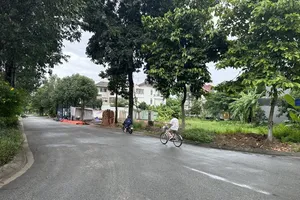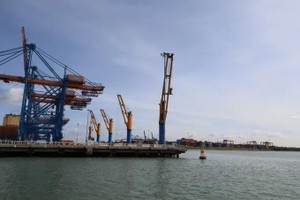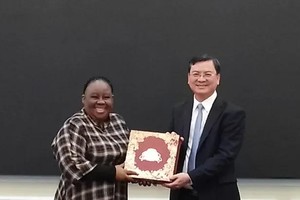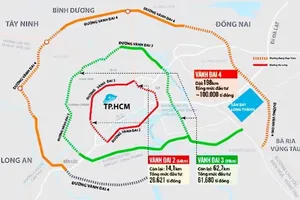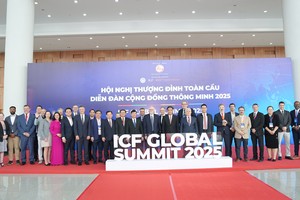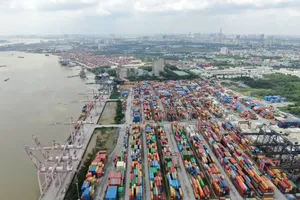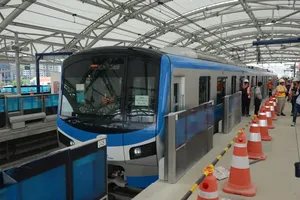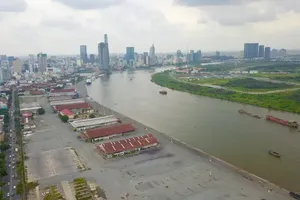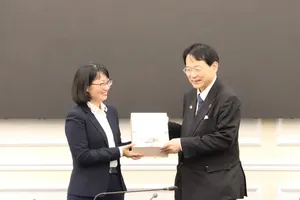
On the morning of June 3, Chairman of the Ho Chi Minh City People’s Committee Nguyen Van Duoc presided over the monthly socio-economic working session for May 2025 and outlined tasks and solutions for June 2025.
Low disbursement, proposal of “green lane” mechanism
Regarding the disbursement of public investment capital, Director of the Ho Chi Minh City Department of Finance Le Thi Huynh Mai stated that the city is making its utmost effort and showing strong determination to achieve a cumulative disbursement rate of 30 percent by the end of the second quarter.
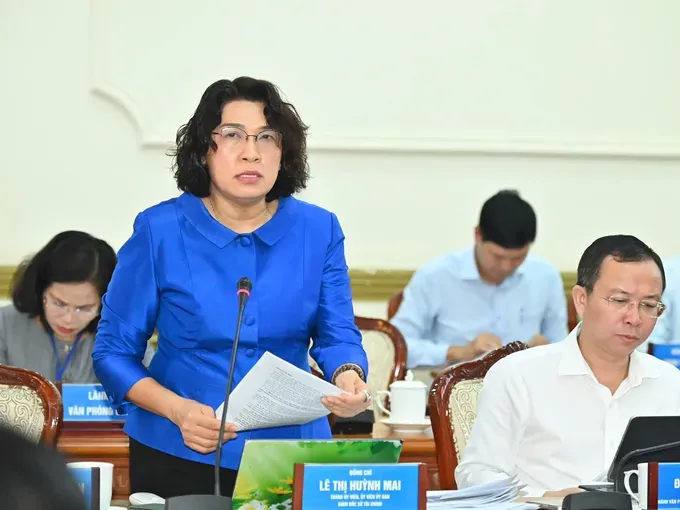
According to the Director of the Ho Chi Minh City Department of Finance, Ho Chi Minh City has set an annual goal of disbursing 100 percent of the total public investment capital allocated by the Prime Minister.
However, the majority of Ho Chi Minh City's public investment capital will be disbursed at the end of the fourth quarter, when major projects complete investment procedures related to land compensation and site clearance.
That is also one of the main reasons why the city’s disbursement rate during the early months of the year remains low, thereby facing difficulties in keeping up with the average disbursement rate of the country.
According to the Municipal Department of Finance, in the early months of the year, the land clearance and compensation costs alone for four BOT projects under Resolution 98, the Binh Tien bridge and road construction project, and the dredging and improving the environment on Van Thanh Canal could disburse nearly VND41 trillion (US$1.6 billion), accounting for 48 percent of Ho Chi Minh City’s total public investment plan for 2025, with over VND85,500 billion (US$3.3 billion).
From now until the end of June, Ho Chi Minh City will disburse several other large-scale projects such as compensation and resettlement for the Ho Chi Minh City–Moc Bai expressway segment passing through the city, worth over VND4.3 trillion (US$165 million), and procurement of equipment for three gateway hospitals totaling VND1.3 trillion (US$50 million), bringing the total additional disbursement to more than VND7.4 trillion (US$284 million).
According to Director of the Ho Chi Minh City Institute for Development Studies Truong Minh Huy Vu, the low disbursement rate of public investment is one of two core issues that the city has identified.
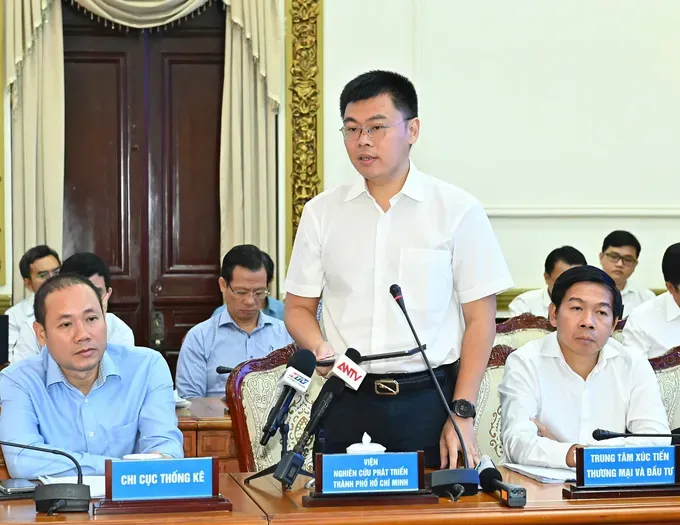
Among the proposed solutions, Mr. Truong Minh Huy Vu suggested the development and implementation of a “green lane” mechanism to accelerate the progress of key public, private and FDI investment projects in Ho Chi Minh City.
This mechanism would focus on five priority groups, including large-scale public investment projects, key FDI projects, high-tech green and digital projects, social housing and infrastructure, especially urban railways.
Streamlined administrative apparatus ensures smooth operation
Associate Professor Dr. Tran Hoang Ngan, National Assembly deputy and Assistant to the Secretary of the Ho Chi Minh City Party Committee assessed that the socio-economic achievements of the city in May were quite "unforeseen" and highly meaningful, as 2025 is a significant year. In addition to national celebration events, the year of 2025 will witness several major transformations, comprising streamlining the administrative apparatus, advancements in science and technology, innovation, and digital transformation.
According to Associate Professor Dr. Tran Hoang Ngan, Ho Chi Minh City should give top priority to ensuring that, starting from July 1, after restructuring, the operations of local wards and communes should run smoothly in order to meet the needs of both residents and businesses. That shall be evidence that streamlining the administrative system leads to greater efficiency, effectiveness, and performance.
Additionally, the municipal Department of Justice, along with other departments and sectors should accelerate efforts to institutionalize and concretize the resolutions and laws passed by the National Assembly in its 9th session, including Resolution No.198 on special policy mechanisms for the private economy.
The private sector is especially important to Ho Chi Minh City, accounting for up to 70 percent of total social investment capital and 60 percent of Ho Chi Minh City's GDP, while the private sector of the whole country makes up 55 percent of social investment capital. Therefore, it is essential to quickly implement and deliver clear messages to the private business community.
Among these efforts, the credit guarantee fund for small and medium-sized enterprises (SMEs) has not been implemented yet while implementing numerous discussions. It was proposed that budget capital should be allocated to this fund and combined with support from banks to assist businesses.
At the meeting, Head of the Ho Chi Minh City Statistics Office Nguyen Khac Hoang also acknowledged that following the momentum from the first quarter, the city’s socio-economic situation in April and May showed many positive signs.
However, he noted that the latter half of the year will be more challenging. Among the difficulties is the U.S. reciprocal taxes which will be an obstacle for the Ho Chi Minh City's manufacturing sector. Public investment disbursement, while considered a key growth driver, remains low at only just over 10 percent as of May 28.
Besides, the business environment still shows little improvement. While the ratio of new businesses entering the market to those exiting has improved to one-on-one which is better than earlier in the year. However, it remains high compared to previous years and higher than the national average of ten on eight. He emphasized that Ho Chi Minh City needs to review and address bottlenecks in its investment environment.
Leader of the Ho Chi Minh City Statistics Office also expressed concern over the consumer price index (CPI) for the first five months of the year, which reached 4.27 percent significantly higher than the national average and neighboring provinces. Key contributors to the high index include building materials, housing, and education along with healthcare. As such, Ho Chi Minh City needs to strengthen programs that stimulate consumer demand and stabilize prices.
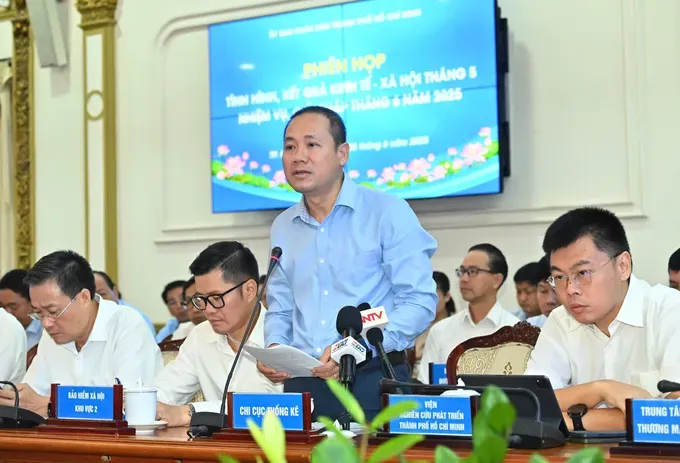
Head of the Ho Chi Minh City Statistics Office Nguyen Khac Hoang also added that the five-month results represent a relatively good starting point compared to previous years, but the momentum and breakthroughs remain unclear as the city was still heavily reliant on traditional growth drivers such as investment, exports, and consumption.



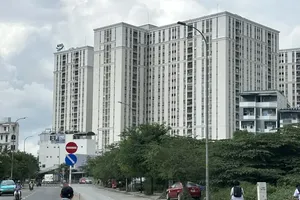
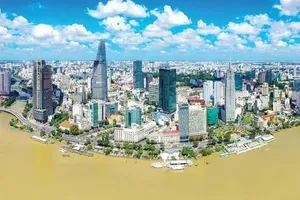

)
